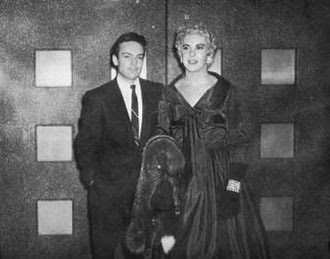By Sally Stone
 |
| File ID 90869742 | © Puhhha | Dreamstime.com |
My first recommendation: don’t waste too much time putting eye makeup on an area where all your hard work is going to be invisible. One example is the eyelid. I have hooded eyes, which almost completely hide my eyelids when my eyes are open. Unless I’m asleep, no one is going to see any of the eye makeup I put there. Consequently, I will often only put foundation on my eyelids leaving colorful eyeshadow for parts of my eye that are more visible.
Enhance your eyes by making them appear larger. You can accomplish this in a couple of different ways. The first is actually a basic grooming task and that is, shaping the eyebrows. A feminine arch to the brow not only helps the eye look bigger, it also helps feminize it. If you aren’t brave enough to truly feminize your eyebrows, at least groom them so they are trim and neat.
Avoid applying eyeliner on the upper lash line. It looks great on girls with naturally large eyes, but not so good on the rest of us. However, applying eyeliner and a little eyeshadow under the lower lash tends to open the eye up. You can also brighten the waterline (that area between your eyeball and the inside of the lower lash) with a white eyeliner pencil to make your eyes look bigger. Just be very careful with that sharp pencil so close to the eye.
If you want to add color to your eyes, I suggest doing the crease with a dark shade of eyeshadow, then apply a lighter shade just above the crease. With the lighter shade, follow the outside circumference of the eyelid down to the outside corner of the eye and then underneath the lower lash to a point approximately a third of the way. When finished, the crease will be dark with the outside half of the eye more brightly shaded. Be sure to blend the crease color and your chosen light color so that it’s impossible to tell where one color ends and the other begins.
I recommend only applying eyeshadow to the outside half of the eye, because, applying shadow to the inside half can actually make the eye look smaller. You’ll have to experiment with shading to determine which colors complement each another and which shades complement your skin tone.
To ensure the colored shadow you applied to the outside of the eye stands out, it is probably best to avoid applying any additional product on the area between the eye crease and the brow. I find that my eyes stand out more prominently if I leave this area natural.
If your eyebrows possess a feminine arch you can get away with applying some highlighter just below the outside half of the brow. If your brows are not arched, applying highlighter can actually accentuate a brow ridge, so be cautious. If you do have a more pronounced brow ridge, I would recommend applying a dark contour to it when you are contouring the rest of the face instead of trying to deal with it using eye makeup.
Finally, comes mascara. Apply three light coats allowing each coat dry before putting on the next. With each coating, take the time to lift and separate the lashes using a mascara comb. Building lash coverage is more effective and looks way more natural than clumping it on in one heavy coat and it is nearly impossible to separate the lashes if the comb is heavily laden with mascara.
And that’s it, ladies. As I stated in the beginning of this article, it may take some trial and error to find a set of makeup techniques that work for your particular eyes. Just keep in mind, that your main objectives should always be to feminize the eyes and make them appear larger than they really are. The basic techniques I have outlined, are the ones I have found to be most effective. It is my sincere hope they work just as well for you.
 |
| Wearing New York & Company |
 |
| Chic gents attending Tuntenball |



















































